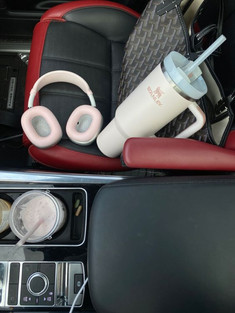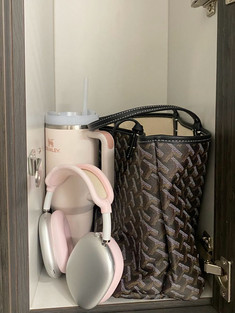It's Not Just a Cup, It's a Symbol for Overconsumption
- Kimberly Vazquez
- Jan 21, 2024
- 3 min read
The Stanley Cup: Vacuum insulation fused with the strength of steel. Sustainable. And fifty whole dollars.
Recently—and quite rapidly—these cups have shot into the collective and have become the latest craze. Granted, these cups were already well-known to the everyday suburbanite and office worker, but thanks to TikTok influencers (“Watertok” if one wants to get more niche) and the latest collaboration with Starbucks, Stanley Cups are now what many people have been, and won’t stop, talking about.
Partly because people have been trampled so that they could obtain a cup, in another instance, a man was tackled after he attempted to steal a box of them.
People have gone to such lengths because owning a Stanley Cup is now trendy and falls into this superficial aesthetic of "having your life together." It's a "that-girl" staple. Trends create demand. Above all, trends create pseudo-communities. Buying the latest trend is the same as being “in.” One “belongs” to this (almost always unnamed) exclusive club because of how expensive the Stanley Cups are. Before anyone asks, the 40 Oz Four Leaf Trustymate is not going to grant one access to the club. Don’t even try it. People think buying the cup earns them a status symbol for "luxury," but it actually screams middle-class overconsumption.
Essentially, a false hierarchy is made, one that is enforced through this endless consumption.
Here are some quick stats:
80% of the world’s natural resources are used by only 20% of the world’s population.
While less than 5% of the population, Americans:
Consume 17% of the world’s energy.
Account for 15% of the world's GDP.
Owning more than one Stanley Cup, adding all the accessories like the bottle carriers, straw covers, snack bowls, and even going as far as personalizing it with one’s own name further proves that within the United States, there’s an unspoken belief that some sort of "luxury" can finally be accessed through overconsumption of "cool" items. We've seen this with Mini Uggs and Airpods. However, true luxury was never meant to be accessible, and it never will be.

Yes, money talks, and its words go a very, very long way, but not all money is created equal. Meaning, while a regular person can save up to purchase the latest trend, a rich person has enough money to purchase the current trend and be able to influence what the next one will be just in case the current one is no longer unique to them. That is exactly what luxury will always be a lifestyle that only a small amount of people can truly maintain and buy into.
Harvard Business Review released a new study which mentioned the “trickle-down effect”. Essentially, status symbols start at the top tiers of society and then trickle down to the rest of society. However, lately, there hasn’t been any trickling-down, but rather a trickling-round in an interesting cultural phenomenon: Global elites need new ways to communicate their wealth and status.
According to the review, “elites can experiment with lowbrow culture and downscale tastes without fear of losing status, while middle-class individuals, whose position is more tenuous, stick to clear-cut status symbols…..When adopting low-end trends, elites combine them with high-end items to make sure the signal is still clear. Sarah Jessica Parker may wear a flea-market jacket, but she does so while wearing Louboutin heels.”
For now, Stanley Cups are, to the naked eye, the new marker of some sort of luxury, but to the trained eye, they're saying something else. As more and more people purchase them, something new will come along – just like what happened with the Swell bottles and the Hydroflasks.











